What I’m most looking forward to in 2022: Angeles National Forest reopening
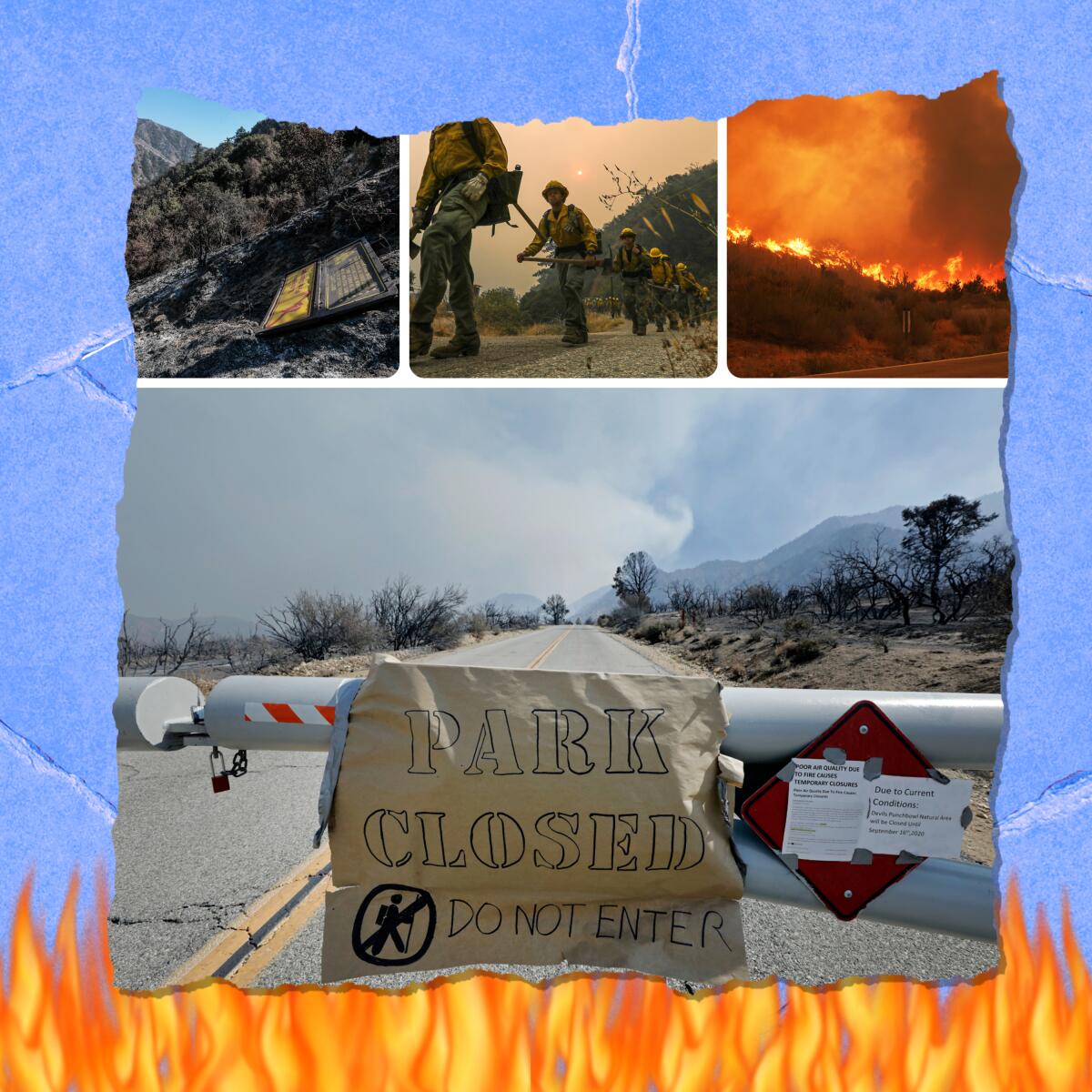
- Share via
This spring I will get to do something I haven’t been able to do in almost two years: hike into parts of the Angeles National Forest that have been off-limits because of the Bobcat fire in 2020. The fire that swept some 115,796 acres has kept some of my favorite spots — Sturtevant Falls in Big Santa Anita Canyon and the Devil’s Punchbowl in Valyermo, to name a couple — off-limits. The U.S. Forest Service’s closure order is scheduled to expire April 1.
The fire started Sept. 6, 2020, and was pretty much contained by late October. Little by little, parts of the forest reopened, including the main Mt. Wilson Trail from Sierra Madre. I’ve hiked that trail since and have seen some signs of charred brush, but for the most part, it’s in good shape. Other places are not. The Cogswell Dam area of the San Gabriel Mountains National Monument burned so badly that biologists and forest rangers rushed in to rescue endangered fish and frogs and move them to safer habitats.
Matthew Bokach, manager of the San Gabriel Mountains National Monument, said in a recent email that he was most concerned about downed trees blocking trails in designated wilderness areas. Chain saws cannot be used in protected wilderness areas. Trails affected by fallen trees include the Burkhart Trail, which leads to Cooper Canyon Falls; the Gabrielino Trail between Redbox and Chantry Flat; and the Windy Gap/Little Jimmy/Mt. Islip area. “Burkhart [Trail] is a veritable ocean of dead trees that we have no easy way to cut down,” Bokach wrote. Volunteers and partners assessed the hazards, but work hasn’t yet been done. However, the High Desert Trail between the South Fork Campground and Devil’s Punchbowl has been cleared of hazardous trees. Still, that doesn’t mean the area will reopen; L.A. County oversees the Devil’s Punchbowl Natural Area.
So mark your calendar for the great reopening to get a glimpse of how much nature has healed (or not) in the last few years.
4 things to do this week

1. Guess what? You’ll soon be able to surf waves in Palm Springs. “Seeking waves in the parched California desert sounds like the delusion of a stereotypically stoned and sun-bleached surfer, but it’s about to be reality,” according to this Hollywood Reporter story. Three serious wave pools are planned for the Coachella Valley, including one created by surfer Kelly Slater, who has perfected mechanical waves at his inland Surf Ranch in Lemoore, Calif. Slater’s wave pool will be built at a new hotel and residential community called Coral Mountain that’s planned for La Quinta (pending city approval); another, the Palm Springs Surf Club (formerly a Wet ‘n Wild park) will welcome all comers as soon as June, the story said. DSRT Surf in Palm Desert promises “ocean-like waves in clean, crystal-clear water” at its coming resort.

2. Start a new tradition: Carry a cup on your next race. I really can’t believe I didn’t think of this sooner. Anyone who participates in big races has seen the pools of paper cups on the ground at water stations as volunteers frantically try to rake them away from the running route. Students Run L.A., a group that trains more than 3,000 students a year to run the L.A. Marathon, has a better idea. Kids get a fold-up cup to carry and refill when they hit water stops. (The cup’s made of plastic, which may have its own environmental downsides.) I know there are logistical reasons that ready-to-go paper cups filled with water or sports drinks are provided at races, but maybe it’s time for a rethink because of the impact on the environment. Maybe there could be kegs of water/drinks that runners can self-fill as they run through? Hats off to SRLA for pointing the way. By the way, the 37th L.A. Marathon is scheduled for March 20.
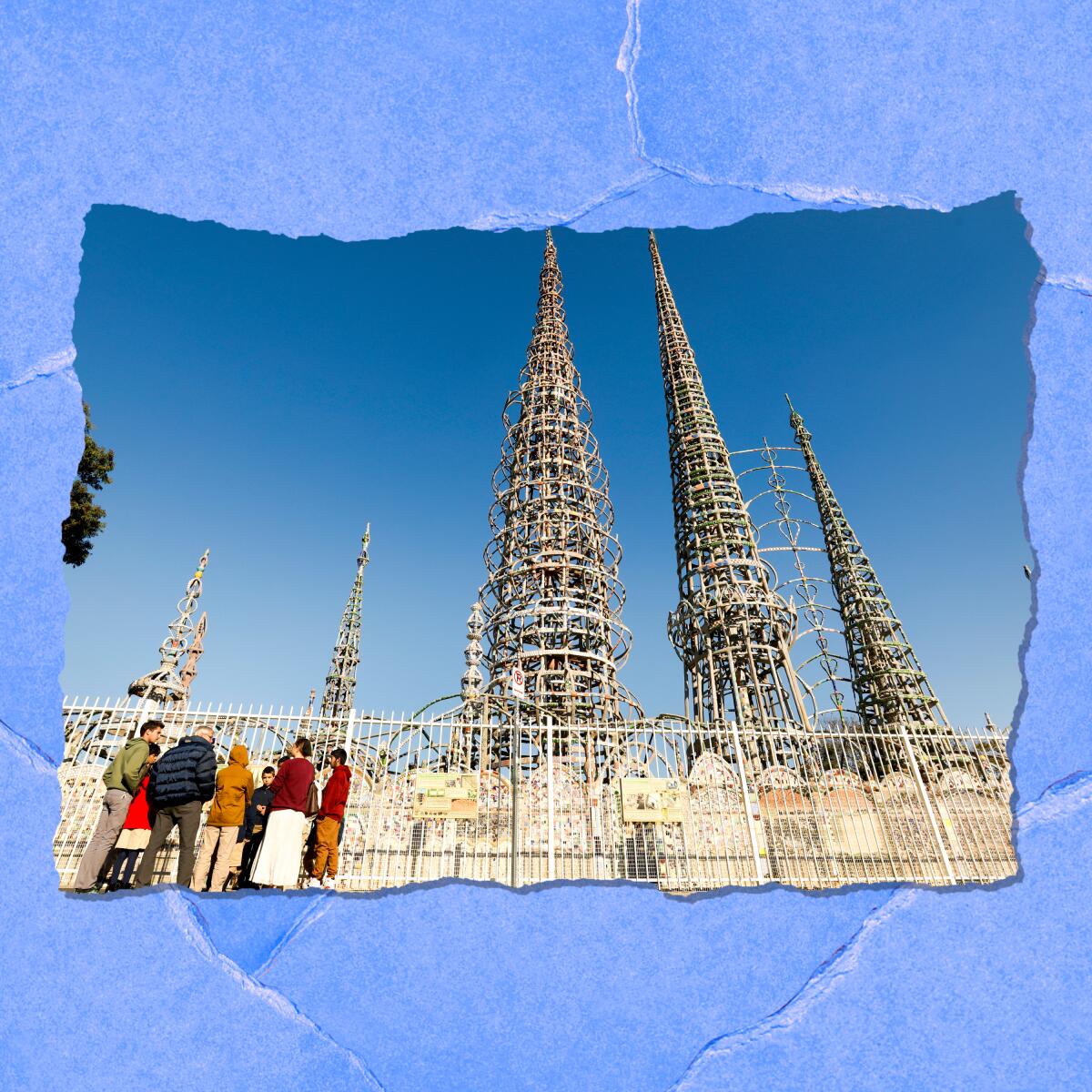
3. The Watts Towers at 100: One of L.A.’s funkiest outdoor landmarks stands tall. Technically, the Watts Towers at 1727 E. 107th St. in L.A. is National Historic Landmark No. 77000297. But no one would have imagined that when Sabato Rodia began building his empire of rebar, concrete, wire mesh and broken bits of ceramics. Rodia even called it “Nuestro Pueblo,” or “our town” in the diverse neighborhood where he lived — and could be seen climbing the spires of stuff. “By the end of 1921, his towers were well underway to becoming one of Los Angeles’ most admired and least understood landmarks,” Times writer Christopher Reynolds notes. Learn the trajectory of the towers’ history and where they’re at now in this story.

4. Take a stroll on Stearns Wharf in Santa Barbara to mark its 150th year. These days we like to walk on piers and wharfs for enjoyment and views, and Stearns Wharf is no exception. A century and a half ago, John Peck Stearns built the wharf to make loading and offloading cargo from ship to shore easier. It ranks as the oldest working wooden wharf in California. Things to know: The wharf is 2,300 feet long and supported by 2,307 pilings, according to the Stearns Wharf website. Now it’s one of the city’s most popular tourist stops. Check out more facts about the wharf and anniversary specials at local businesses.
Wild ways
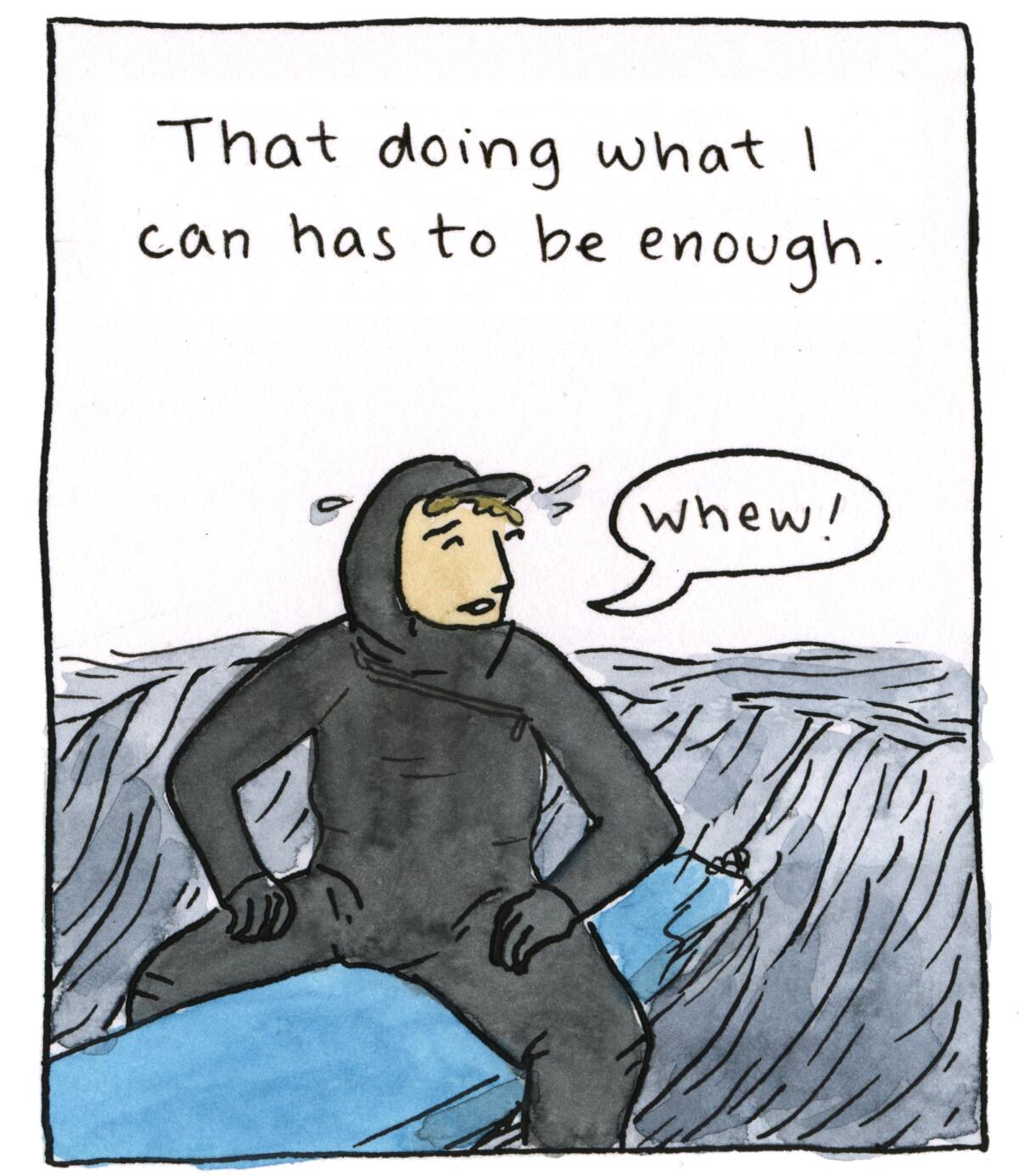
During the pandemic, Seattle cartoonist and writer Natalie Dupille went back to learning how to surf. “No social distance worries,” “outside time,” “exercise” and “very cool” were some of her reasons for her ocean-worthy pursuit. Dupille shared how she felt in the graphic story she shared with The Times titled “How surfing brings me calm during the pandemic.” The story shows how surfing helped her build emotional resilience during the pandemic — something we could all use as we start 2022. Enjoy!
The must-read
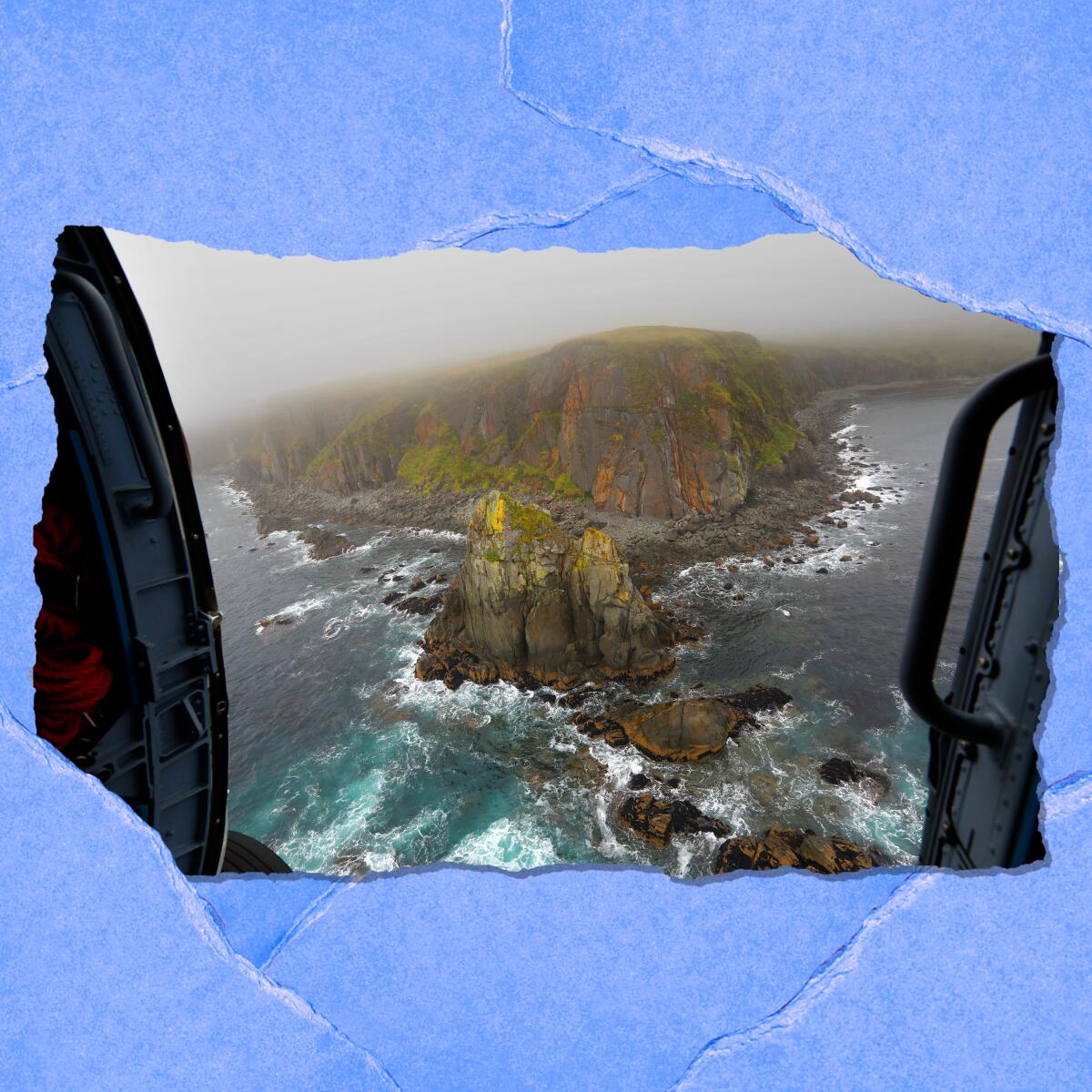
Not to start 2022 off on a downbeat, but here’s a close-up of the effects of climate change. The Times sent a team of journalists to Kodiak Island in Alaska to witness the irreversible changes of the once-stable near-polar ecosystem. “It’s like the gates of hell have been opened,” Lorenzo Ciannelli, a fisheries oceanographer at Oregon State University, told the team, referring to a formerly ice-covered portion of the Bering Sea that has largely disappeared. Read the full story to learn more about the changing landscape in the North Bering Sea.
The red flag
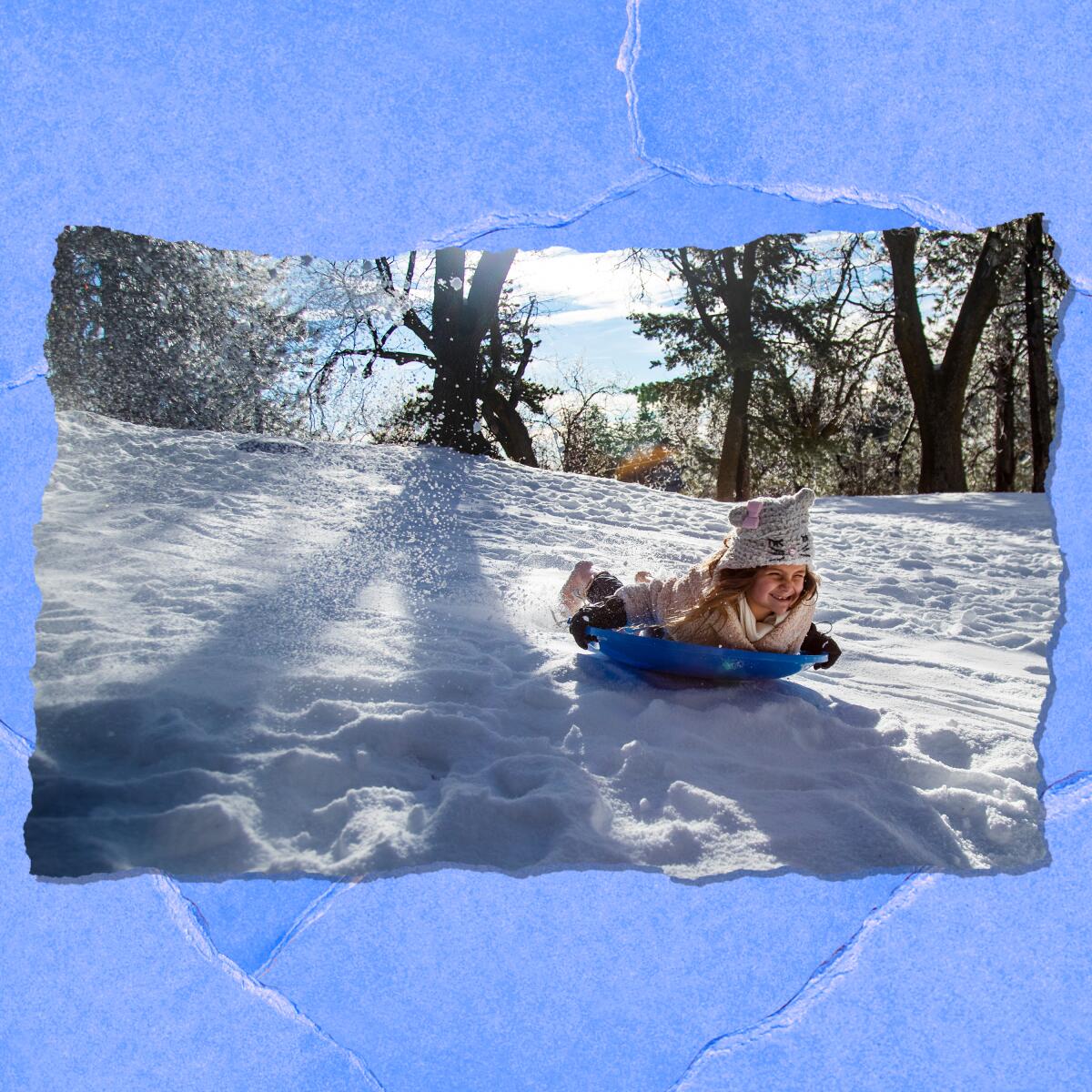
The snow frosting local Southern California peaks is stunning — and treacherous. Before Christmas, a hiker on the Icehouse Canyon Trail in the Mt. Baldy area slid 900 feet down an ice chute when the trail gave way. “It’s good that I hung on to a branch,” Jeaffreson Guevara, 45, told The Times by phone. “Because if not, I would be dead by now.”
Whether you are driving to a ski resort or seeking a snowy sledding spot, the U.S. Forest Service wants you to plan ahead. One thing to remember: Microspikes that attach to your boots are primarily for flat ground; icy conditions and deeper snow require crampons. Here are some Angeles National Forest tips for safe winter travel:
- Make sure you have snow chains and a full tank of gas for your vehicle when you are going to the mountains.
- Bring warm clothes and food in case you have to spend the night unexpectedly. Conditions can change, or you could get stuck in the snow. Most forest areas don’t have cellphone coverage. (Put your phone on airplane mode while you’re in the mountains to conserve the battery.)
- Make sure someone knows where you’re going and when you plan to return. They can alert authorities if something goes wrong and you don’t come back at the expected time and date.
P.S.
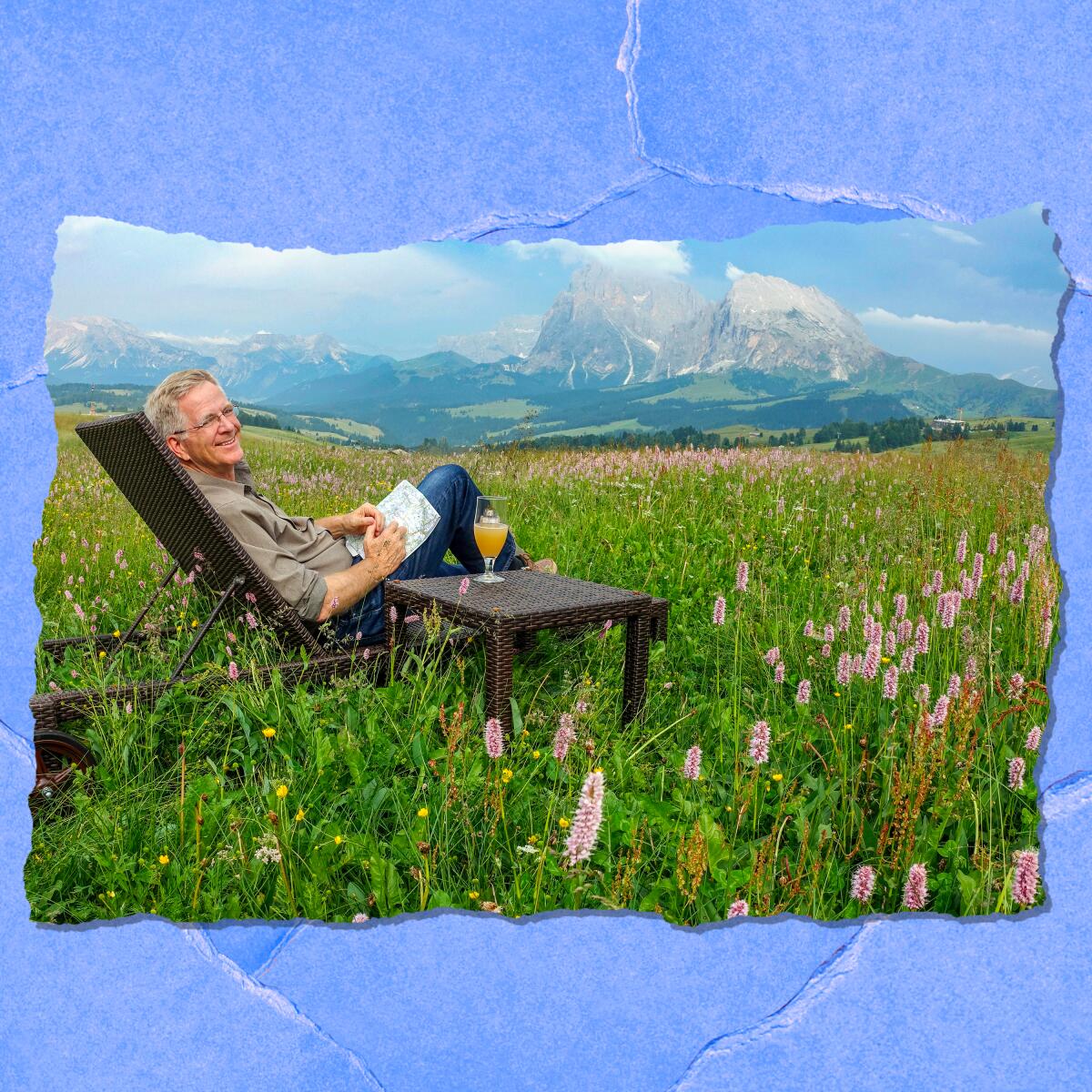
Look for this guy on the trails when you’re hiking around Europe. Travel guru Rick Steves has discovered the wonders of hiking at 66, according to Outside. “What I like is the rhythm of my feet on the trail,” Steves told the magazine. “It’s therapeutic. It’s a delightful experience for my body and my soul.” He and friends notched part of the famed Tour du Mont Blanc, around Europe’s high point, the story said.
Send us your thoughts
Share anything that’s on your mind. The Wild is written for you and delivered to your inbox for free. Drop us a line at TheWild@latimes.com.
Click to view the web version of this newsletter and share it with others, and sign up to have it sent weekly to your inbox. I’m Mary Forgione, and I write The Wild. I’ve been exploring trails and open spaces in Southern California for four decades.

Sign up for The Wild
We’ll help you find the best places to hike, bike and run, as well as the perfect silent spots for meditation and yoga.
You may occasionally receive promotional content from the Los Angeles Times.




